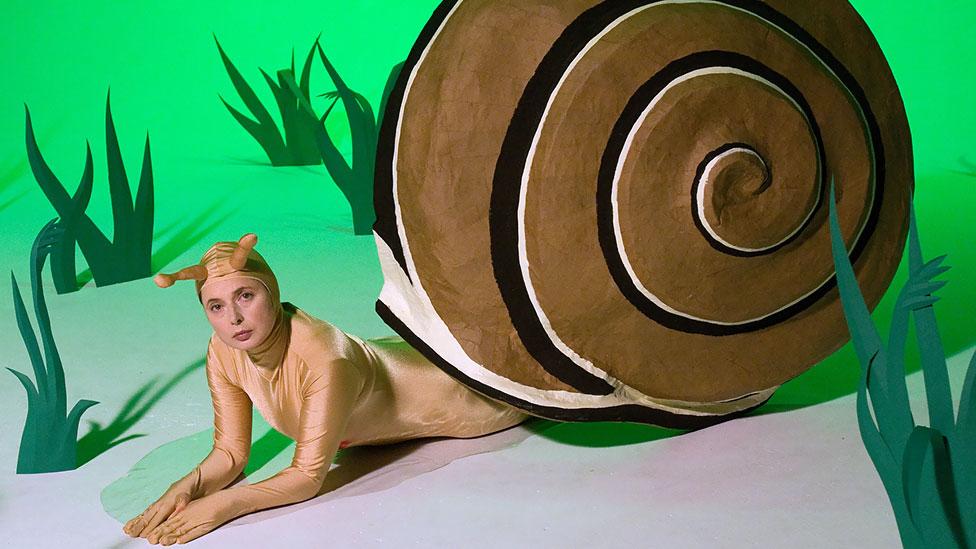
Somber news comes with the territory I patrol as obituaries editor for this newspaper, and it was in that capacity I learned that W.D. Snodgrass was dying.
A colleague had been reading email one morning in the fall of 2008 when he called up a message that had been sent overnight. It was from a woman, he said, who wanted to advise the obit desk that her husband, a poet, was losing his fight with cancer. Knowing that The Times, for practical reasons, will often prepare an obit while the subject is still alive, she said, she wanted to give us a heads-up about his condition.
What was the poet’s name, I asked.
“W.D. Snodgrass,” my colleague said.
It brought me up short.
In the winter of 1976, I was a graduate student at Syracuse University, and Snodgrass, a Pulitzer Prize winner, was a literary celebrity on campus. Our paths had no reason to cross in the classroom; he was teaching poetry, I was being schooled in journalism. But I had an assignment — to write a profile of a person of my own choosing — and I suppose it was the residual English major in me that drew me to someone in the literary trades. So I called him and he agreed to an interview, inviting me to his house.
It was a wet, cold and gray March morning when I drove deep into the frozen farmland of central New York. Snodgrass’s house sat back from the road on a snow-covered slope that beyond the backyard steepened into a wooded hill. He greeted me at the door. Tall, bearded and robust at 50, he had the merry eyes of a man perpetually amused by the world.
We talked about poetry and his life for probably an hour. I went home and wrote the article, received a satisfying grade and peddled the piece to an alternative weekly newspaper in Syracuse. Happily it was accepted — my first professional byline — earning me enough to buy dinner (at a diner).
I didn’t hear from Snodgrass afterward, but no matter: The world spun on, and as it did, the half-dozen copies I’d saved were scattered to who knows where, until the pile had dwindled to one, left to yellow in a box under similar memorabilia.

But now, as he lay dying, I had a fleeting thought: What if I went to see him again, to talk about his life, literature and perhaps, with his so near, death? I contacted his wife, Kathy Snodgrass, a critic and translator of literary works. She talked it over with De, as his friends and family called him, and soon got back to me.
“When I asked De his thoughts on an interview,” she wrote in an email, “he pretty much said no, not for what I’m guessing is the most frequent response, that someone isn’t prepared to admit the end is near, but rather that he thinks dying persons’ opinions on life and art are suspect.”
It had been 32 years, and though the words came filtered through his wife, his tone and manner suddenly returned to me: direct, impatient with high-flown sentiment and a bit disarming, not unlike his poetry. I feared I had left a misimpression, however. I did not want to speak to him for his obituary, I assured Ms. Snodgrass. This would be an article that he might, if he held on, actually read.
Two days later she wrote back: “De says yes, he’d be happy for you to come interview him.”
So on a brisk fall morning, I again drove deep into central New York, now heading north from New York City on a trip that began in sunshine and a wildfire of foliage but soon, predictably, cooled and clouded over.
William DeWitt Snodgrass spent a half-century or more writing poetry, most of it vigorous and plain-spoken. In the 1960s, the poet and critic Gavin Ewart was unequivocal in calling him “one of the six best American poets today.” (“Who the other five are would be arguable,” Ewart added.) Some critics placed Snodgrass in the confessional school, which by his lights was a wrongheaded and too-easy label, as if his poems were nothing more than a coming clean about his transgressions. His verse was a one-man soul-baring operation — honest, sometimes piercingly frank, often wry and witty — that might uncover universal truths along the way.
He could mock himself (“Your name’s absurd,” he wrote in an early poem); proclaim his presence (“Snodgrass is walking through the universe”); and mine his anguish, as he did in “Heart’s Needle,” probably his best-known poem, about the loss of a child through divorce. He wrote:
Winter again and it is snowing;
Although you are still three,
You are already growing
Strange to me.
His was an inward-turning art that appealed to a generation younger than his — one torn between communitarian ideals and a self-involved thirst for emotional and professional fulfillment.
He published more than 30 books of poetry, criticism and translations. He taught generations of young writers and read his work in public often and avidly with a theatrical flair, a product of his formal voice training as a younger man and an ear for music he said he had been born with. He won a fair share of acclaim, most notably in the form of the Pulitzer in 1960, for the volume “Heart’s Needle.” His friend and mentor Robert Lowell found inspiration in that collection, Snodgrass would recall proudly.
I found him in a spare room at the top of a narrow staircase sitting up in bed, a tube in his nose. I pulled up a chair, and so did Ms. Snodgrass.
The poet did not remember our interview from 32 years earlier, and when I heard this I blinked a couple of times and looked down at my notebook, humbled. I suppose we delude ourselves to think that whatever impression we leave with others will be lasting.
Despite his illness, Snodgrass was in fine spirits, and for the next hour or more he talked to me again about his poetry and life: the failed ambitions to be a musician, a timpanist; his war experience in the Navy in the Pacific; his joining a writing workshop at the University of Iowa, switching from playwriting to poetry and finding himself learning from the likes of Lowell, John Crowe Ransom, Karl Shapiro and John Berryman; the suicide of a young friend with whom he had exchanged poems in the mail and then discussed them over the phone.
He told of growing up in Beaver Falls, Pa., where he played the violin well and tennis badly. He spoke of his conflicted feelings about his parents: the obstinate mother he blamed for his sister’s death from asthma at 24, the competitive father, an accountant, who believed that his son’s winning the Pulitzer “unhinged his position” of authority in the family, or so the son said.
But, as his wife had intimated, Snodgrass would not speak of illness or death. (“Everybody has said everything that can be said about it,” he declared.) Nor would he discuss more vaporous matters like the source of his creative impulse. “That’s a critic’s question,” he would say.
Still, I had enough material and drove away with every intention of writing about him and our meeting again after so many years.
We all know about good intentions. Soon came a pileup of holidays, end-of-year workplace responsibilities and my own habits of procrastination, and it was January before I started.
Then, on the morning of Jan. 14, I logged on to my computer to find an item by The Associated Press. W.D. Snodgrass, it said, had “died at his upstate New York home after a four-month battle with inoperable lung cancer.”
I let loose an expletive and sagged in my chair. I who had been taught on the job about the unpredictability of death had not learned my lessons well enough. Whatever I might write now he would never read. Still, I couldn’t let it end there. I contacted Ms. Snodgrass, expressed my condolences and assured her that, yes, we would publish an obituary.
I had edited obituaries for several years but had never assigned myself to write one; we have an able staff of reporters. But it was clear to me that I would have to write it – not because I knew the material, which I fairly did, but because I felt compelled to finish what I had begun that fall morning as I’d headed back into central New York to knock once again on the poet’s door.
I’m not entirely sure what lesson to draw from this. Writing the obit and seeing it published oddly put me in a mournful mood, one I had never felt in a job that demands detachment. I suppose that with Snodgrass’s death, I was forced to acknowledge what else had passed away, my youth. But I also felt a quiet satisfaction. On a country road I had retraced some steps, and a path taken long ago had somehow, fittingly, come full circle.

.jpg)












